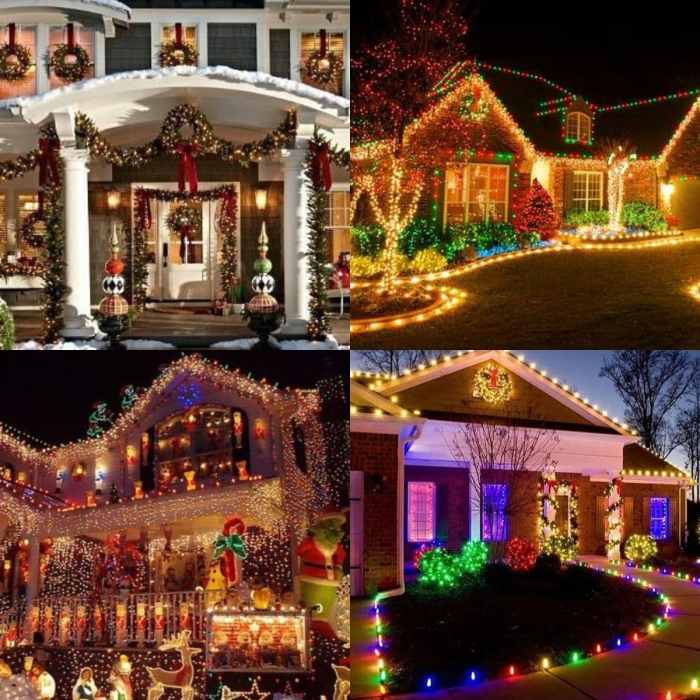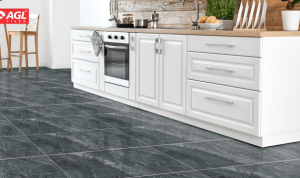Lighting Placement and Design

Outdoor lighting and decor – Effective outdoor lighting transforms a simple backyard into a welcoming and functional space. Careful planning, considering both aesthetics and practicality, is key to achieving the desired ambiance. This section will guide you through designing a lighting plan, understanding layering techniques, and safely installing string lights.
Small Backyard Patio Lighting Plan
This plan focuses on a small backyard patio, aiming for a balance of ambient, task, and accent lighting. The table below details the fixture types, locations, and their respective purposes. Remember, the specific needs will vary depending on the size and layout of your patio.
Okay, so you’re into that whole outdoor lighting and decor vibe, right? It’s totally a mood booster, especially around the holidays. Check out this awesome site for ideas on christmas outdoor light decor – seriously, their stuff is next level. Then, after the festive season, you can easily transition back to your regular outdoor lighting scheme, keeping that space looking fresh year-round.
| Fixture Type | Location | Purpose |
|---|---|---|
| Path Lights (LED) | Along the patio pathway | Safety and wayfinding; soft ambient light |
| Uplights (Low-voltage) | Positioned to highlight trees or architectural features | Accent lighting; creates drama and interest |
| Pendant Lights (weatherproof) | Above the patio table | Task lighting; illuminates the dining area |
| String Lights (LED) | Draped across the patio | Ambient lighting; creates a cozy atmosphere |
| Wall-mounted sconces (solar-powered) | On the patio walls | Ambient and safety lighting; provides soft illumination |
Layering Light in Outdoor Settings
Layering light involves combining different types of lighting—ambient, task, and accent—to create depth, visual interest, and functionality. Ambient lighting provides overall illumination, task lighting focuses light on specific areas, and accent lighting highlights features.For example, ambient lighting in a backyard might be provided by string lights or pathway lights, creating a soft, overall glow. Task lighting could be a pendant light above a dining table, ensuring sufficient illumination for eating.
Accent lighting could use uplights to highlight a beautiful tree or a water feature, drawing the eye to specific points of interest. This layered approach avoids harsh shadows and creates a more inviting atmosphere.
String Light Installation Guide, Outdoor lighting and decor
Safe and effective string light installation is crucial for both aesthetics and safety. Follow these steps:
- Plan the layout: Determine the string light path, considering power sources and desired coverage. Visualize the overall effect before starting.
- Gather materials: You’ll need string lights (with appropriate outdoor rating), cable clips or hooks, extension cords (if needed), and potentially a voltage transformer.
- Prepare the area: Clear the area of any obstacles and ensure the path is free from potential hazards.
- Install mounting hardware: Securely attach cable clips or hooks along the chosen path, maintaining consistent spacing.
- Run the string lights: Carefully drape the lights along the path, securing them to the clips or hooks. Avoid over-tensioning the lights.
- Connect power: Connect the lights to a power source, ensuring all connections are secure and weatherproof. Use GFCI-protected outlets for outdoor use.
- Test and adjust: Turn on the lights to check for proper functionality and adjust placement as needed.
Remember to always prioritize safety and adhere to local electrical codes when installing outdoor lighting.
Safety and Maintenance: Outdoor Lighting And Decor

Outdoor lighting enhances curb appeal and security, but safe installation and regular maintenance are crucial. Neglecting these aspects can lead to electrical hazards, equipment damage, and even injury. This section will cover essential safety precautions and maintenance practices to ensure your outdoor lighting system remains functional and safe for years to come.
Electrical Safety Precautions
Working with electricity always presents risks. Before beginning any installation or maintenance task, always disconnect the power supply to the circuit powering the outdoor lights. Use a voltage tester to double-check that the power is indeed off. Never work with wet hands or in wet conditions. If you are uncomfortable working with electricity, it is best to hire a qualified electrician.
When working at heights, use a stable ladder and follow all safety guidelines. Wear appropriate personal protective equipment (PPE), including safety glasses and insulated gloves. Remember, safety should always be your top priority.
Outdoor Light Bulb Comparison
Choosing the right light bulb significantly impacts longevity, brightness, and energy consumption. Incandescent bulbs offer warm light but are energy-intensive and have short lifespans. Halogen bulbs are brighter and more energy-efficient than incandescent bulbs, but they still generate heat and have a relatively short lifespan. Compact Fluorescent Lamps (CFLs) are significantly more energy-efficient than incandescent and halogen bulbs and last much longer.
However, they contain mercury and require careful disposal. Light-Emitting Diodes (LEDs) are currently the most energy-efficient option, boasting a long lifespan and a wide range of color temperatures and brightness levels. For example, a 60-watt equivalent LED bulb uses only around 8-10 watts of power, compared to 60 watts for an incandescent bulb. The longer lifespan of LEDs also reduces replacement costs over time.
Outdoor Lighting Maintenance Checklist
Regular maintenance extends the life of your outdoor lighting system and prevents potential hazards. Here’s a checklist for routine inspections and upkeep:
- Inspect fixtures and wiring annually (or more frequently in harsh climates): Look for loose connections, damaged wires, or signs of corrosion. Address any issues immediately.
- Clean fixtures regularly: Dust, dirt, and debris can reduce light output and shorten the lifespan of bulbs. Use a soft cloth and mild detergent to clean the fixtures.
- Replace bulbs as needed: Keep track of the lifespan of your bulbs and replace them promptly when they burn out. This prevents unexpected darkness and ensures optimal illumination.
- Check for pest infestations: Insects and rodents can damage wiring and fixtures. Take appropriate steps to deter pests.
- Test GFCI outlets: Ground Fault Circuit Interrupters (GFCIs) protect against electrical shocks. Test them regularly to ensure they are functioning correctly.
Following this checklist will help maintain the safety and efficiency of your outdoor lighting system, ensuring it continues to provide both illumination and aesthetic appeal for years to come.
Popular Questions
What’s the best way to protect outdoor lights from the elements?
Choose fixtures with weatherproof ratings (IP ratings) appropriate for your climate. Regularly clean and inspect lights to prevent damage from moisture, debris, and insects.
How often should I replace outdoor light bulbs?
It depends on the bulb type. LEDs typically last much longer than incandescent or halogen bulbs. Check the manufacturer’s specifications for expected lifespan.
Can I use indoor string lights outdoors?
No, most indoor string lights are not designed for outdoor use and lack the necessary weatherproofing. Use only string lights explicitly labeled for outdoor use.
How do I choose the right color temperature for my outdoor lighting?
Warm white (2700-3000K) creates a cozy, inviting atmosphere, while cool white (5000-6500K) is brighter and more energizing. Consider the mood you want to create.





